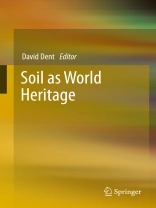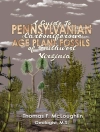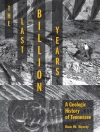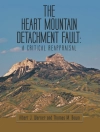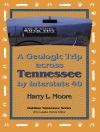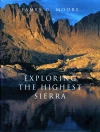Soil as World Heritage celebrates a half century of field experiments on the Balti Steppe, in Moldova – where Dokuchaev first described the Typical Chernozem in 1877, protected from the elements by a unique system of shelter belts designed by the great man, and now provisionally listed as the first World Heritage Site for soil. The book presents contributions to the 2012 international symposium attended by researchers, practitioners and policy makers from the European Commission and countries as diverse as Belarus, Bulgaria, the Czech Republic, France, Germany, Italy , the Netherlands, Romania, Russia, Ukraine, United Kingdom, USA and, of course, Moldova itself.
The experimental data demonstrate the damage caused by human activity to the productivity and integrity of the black earth and, also, ways to restore its fertility. Results from even longer-established trials worldwide also demonstrate that agricultural practices are driving global warming, leaching of nutrients, pollution of water resources, diversion of rainfall away from replenishment of soil and groundwater to destructive runoff, and destroying soil organic matter and biodiversity. These are pressing issues for our generation and will press harder on future generations. Long-term field experiments, and the scientific skills and experience that they nurture, will be more and more valuable as a foundation and focus for interdisciplinary teams studying the effects of farming practices on the soil and soil life so as to devise a sustainable alternative.
Europe-wide and worldwide contributions also discuss economic incentives – carbon and green water credits – which themselves require robust supporting data, and legislative aspects of promoting more sustainable farming systems. The outcomes of the conference include recommendations for institutional support for sustainable farming and a draft of the law on land and soil management for the Parliament of Moldova.
Зміст
The soil and environment.- Chernozem: soil of the steppe
– The quality of Moldovan soils: issues and solutions.- The state of soil erosion in the Republic of Moldova and the need for monitoring
.- Chernozem under different land uses in long-term field experiments.- Essential mass and structure of soil microorganisms in the black earth.- Effects of long-term fertility management on the soil nematode community and cyst nematode Heteroera schachtii population in experimental sugar beet fields.- Biochemical parameters of arable chernozem in long-term field experiments.- Energy status of soil agro-ecosystems.- Heavy metals in the anthropogenic cycle of elements.-
Effects of long-term application of fertilizers on the trace element content of soils.- Potassium in Brown forest soils.- Pure and applied agro-physics.-
Evolution of chernozem in the complex section at Storozheve, Ukraine.- Climate-change and its impact on soil productivity in Moldova.-
Differences between two multi-scalar indices of drought in intensively farmed regions of the Czech Republic.-
Soil fertility: lessons from long-term field experiments.- The continuing value of long-term field experiments: insights for achieving food security and environment.- Long-term field experiments with fertilizers in Romania: their relevance to sustainable agriculture.- The beginnings of long-term field experiments on crop rotations at Balti.- 50 years of field experiments with crop rotations and continuous cultures at the Selectia Research Institute for Field Crops.- Long-term field experiments as a foundation for conserving and enhancing soil fertility.- Productivity and fertility of the Balti chernozem under crop rotation with different systems of fertilization.- Long-term field experiment with irrigation on the Balti chernozem.- Quality of soil organic matter under crop rotations and continuous cultures.- Soil organic matter and soil microbial biomass in the Baltilong-term experiments.- Total and labile organic matter in Typical chernozem under crop rotation, continuous cropping, perennial crops and fertilization.- Primary soil tillage in rotations of the main field crops in Moldova.- Humus dynamics and efficiency of crop rotations on Calcareous and Common chernozem.- Soil conservation capability of crops and crop rotations: data from long-term studies in Belarus.- Crop yield and quality depending on fertilization in crop rotation on Sod-Podzolic soil.- Potassium effects on wheat yield and quality in long-term experiments on Luvisol in Romania.- Effect of systematic mineral fertilization on available potassium in Pellic Vertisol.-
Different ways of doing things.- Towards sustainable, self-supporting agriculture: biological nitrogen factories as a key for future cropping systems.- Legumes as an alternative source of nitrogen for modern agriculture.- Resource-conserving agriculture: under-sowing and mixed crops as stepping stones towards a solution.- Rationale for humus conservation in arable soils in Moldova.- Phyto-amelioration of degraded chernozem.- Phyto-technology for remediation of chernozem in the south of Moldova.- Organic manuring to restore the fertility of eroded soils.- Structural indices of Typical chernozem under various methods of tillage.- Direct and residual effects of phosphate-enhanced organic fertilizers on soil fertility and crop production.- Worm compost to improve soil fertility.- Efficiency of grass strips and sodded waterways.- Sown and natural grassland for soil protection and productivity in the forest-steppe of Ukraine.- Perennial grasses creating soil structure and raising fertility.- Ecological agriculture to mitigate soil fatigue.- Mitigation of western corn rootworm (Diabrotica virgifera virgifera Le Conte) by maize varietal selection.-
Soil policy and communications to decision makers.- Abating climate change and feeding the World through soil carbon sequestration.-Business case for Green Water Credits.- European Commission’s policy initiatives towards European and global soil protection.- Scientific evidence on the contribution of crop rotation to more sustainable agriculture.-
Recommendations of the symposium.
Про автора
David Dent has worked at the exposed frontiers of soil science and land use planning in every continent – embracing acid sulphate soils, salinity, innovation in practical applications of airborne geophysics and satellite remote sensing, and advocacy at the science–policy interface. His career spans soil survey, university teaching, research and advice to companies, governments and international organizations. He was awarded the Australia Day Centenary Medallion for scientific contributions to the National Action Plan for Salinity and Water Quality. Latterly Director of ISRIC – World Soil Information, since 2009 he is a Fellow of Lund University Centre for Sustainability Studies.
